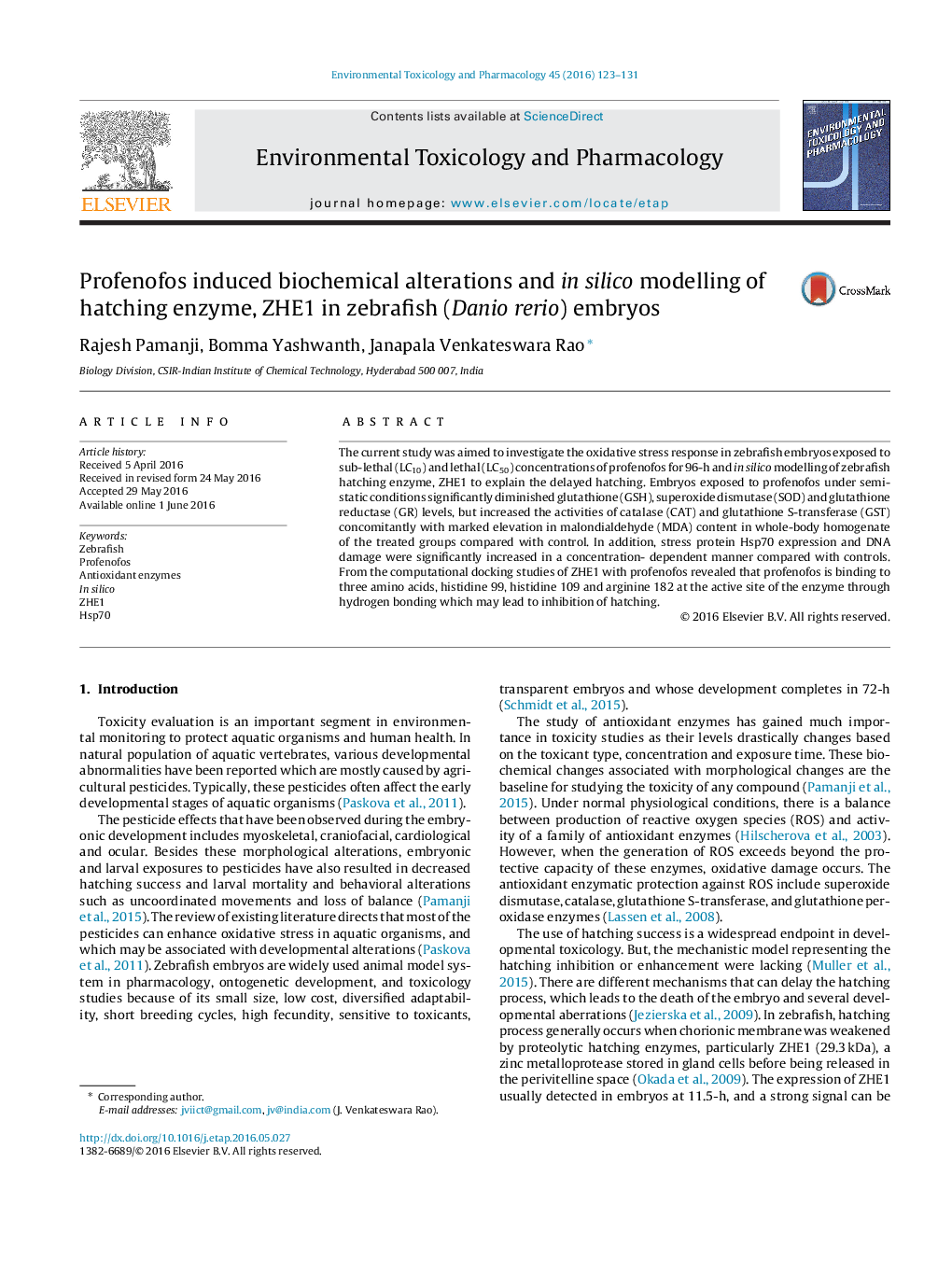| Article ID | Journal | Published Year | Pages | File Type |
|---|---|---|---|---|
| 5848569 | Environmental Toxicology and Pharmacology | 2016 | 9 Pages |
â¢Profenofos exposure in early development of zebrafish leads to severe oxidative stress.â¢Differential expression of antioxidative enzymes was observed.â¢Drastic enzymatic alterations were recorded between 48 and 72 h exposure.â¢Hsp70 expression and DNA damage were concentration dependent.â¢Delayed hatching was explained through docking of ZHE1.
The current study was aimed to investigate the oxidative stress response in zebrafish embryos exposed to sub-lethal (LC10) and lethal (LC50) concentrations of profenofos for 96-h and in silico modelling of zebrafish hatching enzyme, ZHE1 to explain the delayed hatching. Embryos exposed to profenofos under semi-static conditions significantly diminished glutathione (GSH), superoxide dismutase (SOD) and glutathione reductase (GR) levels, but increased the activities of catalase (CAT) and glutathione S-transferase (GST) concomitantly with marked elevation in malondialdehyde (MDA) content in whole-body homogenate of the treated groups compared with control. In addition, stress protein Hsp70 expression and DNA damage were significantly increased in a concentration- dependent manner compared with controls. From the computational docking studies of ZHE1 with profenofos revealed that profenofos is binding to three amino acids, histidine 99, histidine 109 and arginine 182 at the active site of the enzyme through hydrogen bonding which may lead to inhibition of hatching.
Graphical abstractDownload high-res image (171KB)Download full-size image
